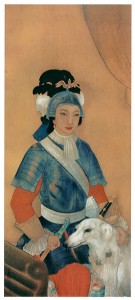Translated and introduced by Joshua L. Freeman
Exmetjan Osman (b. 1964) is widely acknowledged as the founder of the gungga (“hazy”) movement in Uyghur poetry, a modernist school which blossomed after Exmetjan’s first Uyghur-language abstract poems were published in Xinjiang’s Tengri Tagh journal in 1986. As a teenager in Ürümqi during the early days of China’s reform period, Exmetjan developed a strong interest in international literary trends, and in 1982 joined one of the first cohorts of Xinjiang Uyghurs to study abroad after the Cultural Revolution. Completing first a Bachelor’s and then a Master’s degree in Arabic literature at Damascus University, Exmetjan acquired Arabic with such fluency that in 1988 he was able to publish his first Arabic-language poetry collection, The Second Stumble. His first Uyghur-language collection followed three years later, and the years since have seen the publication of six more volumes in Arabic and Uyghur, to great acclaim in both the Syrian and the Uyghur literary worlds. Continue reading

